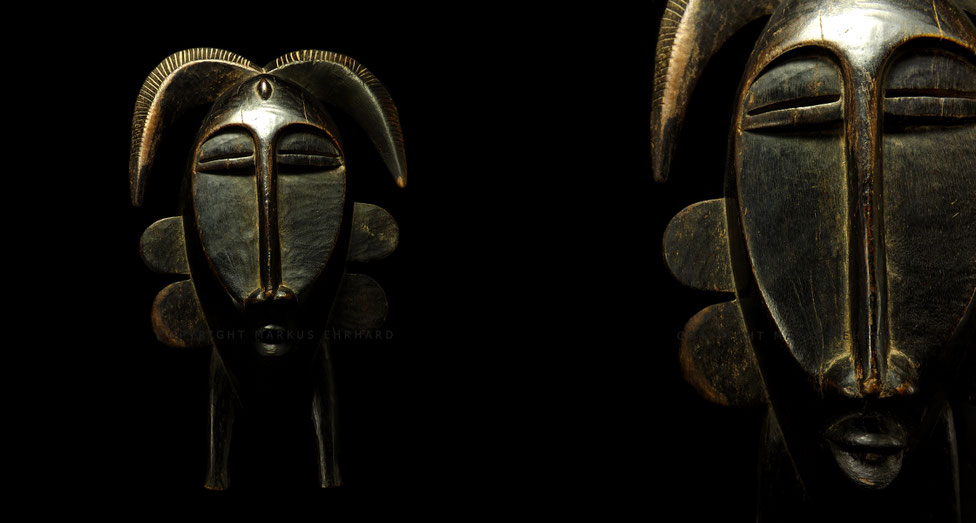
The Dioula form an own Senufo Group with an Islamic background. Dioulas can be part of other sub-groups of the Senufo. Songuifolo Silué for example belonged to the Kafibele and was also a Dioula. He lived and worked in Sirasso, which is the Dioula name of the village, Solokaha is the Senufo name.
The Massa cult in the 1950 did destroy a lot of Senufo sculptures, it was not allowed to produce or have objects with a face. But masks and statues made after that time are carved in the old traditional style with the same symbolism, force and power.
As written in former articles about the Kpelié, in the last 150 years, the typical features didn't change in its fundamental style. But Kpeliés made by and for the Dioula group show a significant distinction, they are larger than the traditional Kpelié.
The above shown mask, carved by Songuifolo Silué in his pure style, is evidently larger than other Kpeliés. But the minimal style has nothing to do with the size. Karl-Heinz Krieg did date this restored mask around 1960. Beside this authentic mask with traces of usage, two other masks are known. One is in the private Karl-Heinz Krieg collection and one is exhibited at the Museum für Völkerkunde in Hamburg, Germany.
Kpelié mask, carved by Songuifolo Silué, Fono from Sirasso. *1914 +1986. Time of creation around 1960.
31,5 x 19,5 x 8,0 cm, wood, partly restored. Collected by Karl-Heinz Krieg in the 1960ies.
Literature:
- Wenn Neuordnung Ordnung schafft, Markus Ehrhard, pages 122 - 125.
- Kunst und Religion bei den Gbato-Senufo, Elfenbeinküste, Karl-Heinz Krieg und Wulf Lohse, page 46 - 49.
- Aus Afrika, Ahnen - Geister - Götter, Jürgen Zwernemann und Wulf Lohse, Seite 65 - 66.
- Hamburgisches Museum für Völkerkunde, page 14.
- Afrika Begegnung, aus der Sammlung Artur und Heidrun Elmer, page 67.
Copyright content and images by Markus Ehrhard

